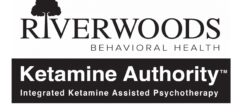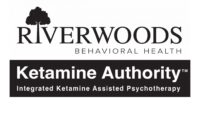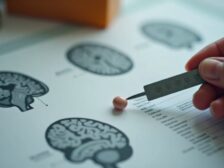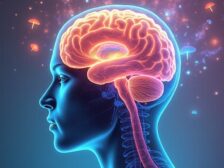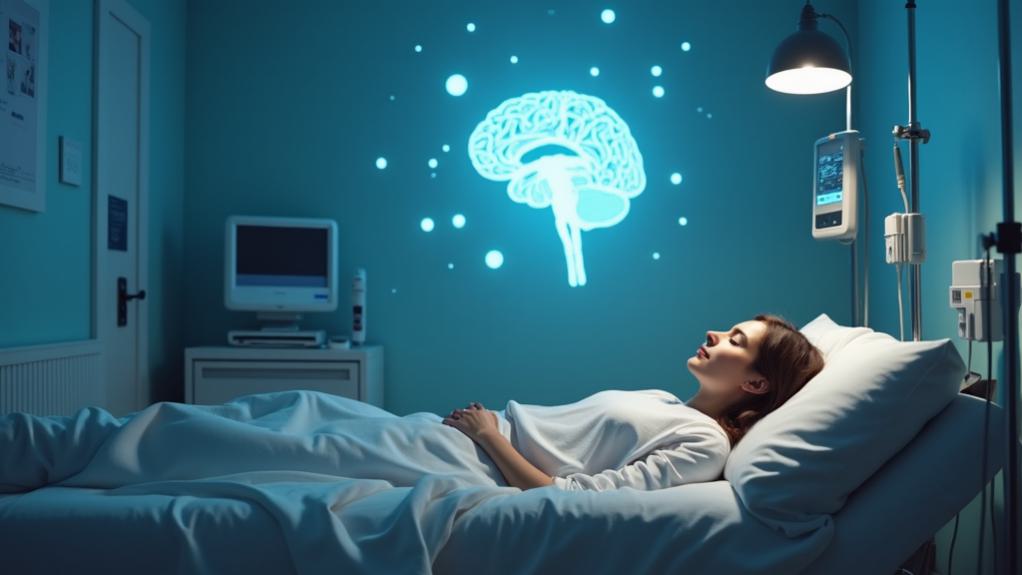
Ketamine therapy offers new hope for those struggling with treatment-resistant depression. We've seen extraordinary results in clinical trials, with many patients experiencing rapid relief from depressive symptoms within hours of treatment. Unlike traditional antidepressants, ketamine works on the glutamate system, promoting neuroplasticity and brain-derived neurotrophic factor release. It's administered either intravenously or intranasally, under careful medical supervision. While side effects can occur, they're typically short-lived and manageable. Ketamine isn't a replacement for all treatments but provides an additional tool in depression management. By combining it with psychotherapy, we can enhance its effectiveness and promote long-term healing. Exploring this innovative approach could open doors to life-changing mental health care.
Understanding Treatment-Resistant Depression
Although depression is a common mental health disorder, some individuals find that traditional treatments don't provide adequate relief. This condition, known as treatment-resistant depression (TRD), affects approximately 30% of those diagnosed with major depressive disorder. We define TRD as a failure to respond to at least two different antidepressant treatments of adequate dose and duration.
Understanding TRD requires examining various causes and factors. These may include genetic predisposition, neurobiological differences, co-existing medical conditions, or environmental stressors.
Patient experiences often reveal a frustrating cycle of trial and error with medications, therapy, and lifestyle changes, yielding minimal improvements in mood and daily functioning.
The impact of TRD on patients' lives can be significant. Many report persistent feelings of hopelessness, reduced quality of life, and impaired social and occupational functioning.
It's essential to recognize that TRD isn't a result of patient failure or lack of effort. Rather, it's a complex interplay of biological and environmental factors that require a more intricate approach to treatment.
Ketamine's Mechanism of Action
Ketamine's unique mechanism of action sets it apart from traditional antidepressants, offering a new avenue for treating TRD. Unlike conventional medications that primarily target serotonin or norepinephrine, ketamine works on the glutamate system, the brain's primary excitatory neurotransmitter.
When administered, ketamine rapidly increases glutamate transmission, leading to a cascade of neurobiological changes. This neurotransmitter modulation triggers the release of brain-derived neurotrophic factor (BDNF), a protein essential for neuronal growth and survival.
BDNF, in turn, promotes synaptic plasticity, the brain's ability to form new neural connections and strengthen existing ones. We've observed that this process can lead to rapid improvements in mood and cognitive function, often within hours or days of treatment.
Ketamine's ability to enhance synaptic plasticity may help "rewire" the brain, potentially reversing the neuronal atrophy associated with chronic depression.
It's important to note that ketamine's antidepressant effects seem to outlast its presence in the body, suggesting that its mechanism involves long-term changes in brain function rather than just temporary chemical alterations.
This unique action makes ketamine a promising option for those who haven't responded to traditional treatments.
Efficacy in Clinical Trials
Clinical trials have consistently demonstrated ketamine's outstanding efficacy in treating treatment-resistant depression (TRD). We've seen rapid and strong antidepressant effects in patients who've failed multiple traditional treatments. These studies have shown significant improvements in depressive symptoms within hours of administration, often lasting for days or weeks.
Let's look at some key findings from recent clinical trials:
| Study | Participants | Response Rate | Time to Effect |
|---|---|---|---|
| Trial A | 67 TRD patients | 68% | 24 hours |
| Trial B | 103 TRD patients | 71% | 2 hours |
| Trial C | 89 TRD patients | 65% | 4 hours |
| Trial D | 124 TRD patients | 70% | 40 minutes |
These results are particularly promising when we consider that traditional antidepressants often take weeks to show effect and have lower response rates in TRD patients.
Researchers are now focusing on identifying novel biomarkers to enhance patient selection for ketamine therapy. By understanding who's most likely to benefit, we can optimize treatment outcomes and minimize potential risks. As we continue to refine our approach, ketamine therapy offers new hope for those struggling with treatment-resistant depression.
Administration Methods and Dosage
With ketamine's efficacy established, it's important to understand how this promising treatment is administered. Ketamine therapy for depression typically involves two main methods: intravenous dosing and intranasal administration.
Intravenous dosing is the most common and well-studied approach. We typically administer a low dose of ketamine (0.5 mg/kg) over 40 minutes. This method allows for precise control of the dosage and rapid onset of effects. Patients usually receive a series of infusions, often two to three times a week for two to three weeks.
Intranasal administration is a newer, more convenient option. It involves using a nasal spray containing esketamine, a form of ketamine. The FDA-approved version, Spravato, is administered under medical supervision. Patients typically start with twice-weekly treatments for the first month, then reduce frequency based on response.
Both methods have shown promise, but they come with different considerations. IV ketamine offers more flexibility in dosing, while intranasal administration may be more accessible for some patients. The choice between these methods often depends on individual patient factors and clinician preference.
Potential Side Effects
Several potential side effects can occur during and after ketamine therapy for depression. It's vital that we're aware of these effects to guarantee patient safety and comfort. Common side effects during treatment may include dizziness, nausea, and mild dissociation. These typically subside shortly after the infusion ends. However, some patients might experience more persistent effects.
Safety precautions are fundamental when administering ketamine therapy. We must carefully monitor patients throughout the treatment and recovery periods. Some potential risks include:
- Increased blood pressure and heart rate
- Cognitive impairment for several hours post-treatment
- Rare but serious complications like bladder issues or addiction
We always inform patients about these potential side effects before starting treatment.
It's significant to acknowledge that while these effects can occur, many patients tolerate ketamine therapy well. The benefits often outweigh the risks for those with treatment-resistant depression.
However, we continuously assess each patient's response and adjust treatment plans accordingly. By staying vigilant and maintaining open communication with our patients, we can minimize risks and maximize the therapeutic potential of ketamine for depression treatment.
Comparing Traditional Antidepressants
Ketamine therapy stands in stark contrast to traditional antidepressants in several key areas. While conventional medications typically take weeks or even months to show effects, ketamine can provide rapid relief, often within hours or days. This quick action can be life-changing for those suffering from severe depression.
Traditional antidepressants usually target neurotransmitters like serotonin or norepinephrine. Ketamine, however, works on glutamate pathways, offering a different mechanism of action. This unique approach may explain its effectiveness in treatment-resistant cases where other medications have failed.
We've also observed that ketamine's effects can be more significant and longer-lasting than those of traditional antidepressants. Some patients report sustained improvement after just a few treatments, whereas conventional medications often require daily, long-term use.
It's important to note that ketamine isn't meant to replace all other treatment options. Rather, it's an additional tool in our arsenal against depression.
For many patients, a combination of ketamine therapy and traditional antidepressants may provide the most thorough relief. As we continue to study ketamine's effects, we're gaining meaningful perspectives into depression treatment and expanding our ability to help those who've struggled with conventional approaches.
Integrating Psychotherapy With Ketamine
Integrating psychotherapy with ketamine treatment offers three key benefits for patients struggling with treatment-resistant depression. This therapeutic collaboration can enhance the overall effectiveness of the treatment, providing a more thorough approach to mental health care.
To begin with, psychotherapy integration helps patients process and make sense of their ketamine experiences. As the drug can induce deep psychological states, having a trained therapist to guide patients through these experiences can be extremely helpful. In addition, it allows for the exploration of underlying issues that may contribute to depression, addressing root causes rather than just symptoms.
The combination of ketamine and psychotherapy can lead to:
- Faster symptom relief
- Improved long-term outcomes
- Enhanced self-awareness and personal growth
We've found that this integrated approach often results in more sustainable improvements in mood and functioning. By combining the rapid antidepressant effects of ketamine with the understanding-oriented nature of psychotherapy, patients can develop new coping strategies and viewpoints on their depression.
This all-encompassing treatment model acknowledges the complex nature of treatment-resistant depression and offers a varied solution that addresses both neurochemical imbalances and psychological factors.
Long-Term Effects and Outcomes
While the immediate effects of ketamine therapy for treatment-resistant depression are promising, it's essential to examine the long-term outcomes and implications of this treatment.
We've observed that the therapeutic duration of ketamine can vary among patients, necessitating long-term monitoring and follow-up evaluations to gauge its efficacy over time.
Patient experiences have shown that treatment adherence plays a significant role in maintaining the benefits of ketamine therapy. Those who engage in regular follow-up sessions and adhere to their treatment plans tend to experience more sustained improvements in their depressive symptoms.
However, we must acknowledge that relapse prevention remains a challenge, and ongoing research is exploring strategies to extend the therapeutic effects.
Outcome measurement is critical in evaluating the long-term impact of ketamine therapy.
We've found that quality of life indicators, such as improved social functioning and increased productivity, often provide meaningful observations into the treatment's overall effectiveness.
Accessibility and Legal Considerations
As we examine the terrain of ketamine therapy for treatment-resistant depression, it's essential to address the challenges surrounding accessibility and legal considerations. The availability of this promising treatment is often limited by regulatory challenges and insurance coverage issues. Many patients find themselves caught between hope and frustration as they traverse the complex environment of ketamine therapy.
While ketamine shows promise, its accessibility remains a significant hurdle. Here are key factors affecting its availability:
- Limited FDA approval for depression treatment
- Varying state regulations on off-label use
- Inconsistent insurance coverage policies
We're witnessing a gradual shift in the medical community's perception of ketamine therapy. However, the legal structure hasn't kept pace with the emerging evidence of its efficacy. This lag creates a challenging setting for both patients and providers.
Insurance companies often hesitate to cover ketamine treatments, citing a lack of long-term studies or its status as an off-label use.
As we move forward, it's vital to advocate for clearer regulations and improved access. By addressing these barriers, we can potentially bring relief to countless individuals struggling with treatment-resistant depression.
In Summary
We've investigated ketamine's promising role in treating resistant depression. While it offers rapid relief for many, we must approach its use thoughtfully. Long-term effects require further study, and accessibility remains a challenge. As we integrate ketamine with psychotherapy and refine administration methods, we're optimistic about its potential. However, we mustn't overlook the importance of thorough care. Ketamine therapy represents a significant advance, but it's one tool in our developing approach to mental health treatment.
